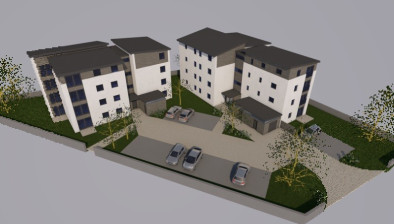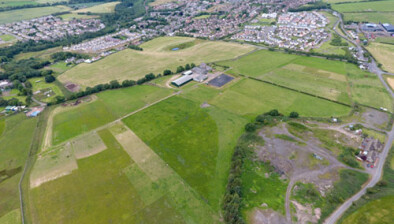Craig Sanderson: NPF4 and the definition of ‘affordable’ housing

Craig Sanderson
Craig Sanderson, former chief executive of Link Housing and member of the Edinburgh Poverty Commission, addresses some key issues regarding the Scottish Government’s National Planning Framework 4 (NPF4) document. He highlights the lack of attention paid to infrastructure and the need for a redefinition of ‘affordable’ housing, with a focus on social housing.
CaCHE has recently published several blogs about NPF4, but only one mentioned infrastructure, and none queried the definition of ‘affordable’ housing.
The NPF4 document suggests that planning and development should be ‘infrastructure-led’. The respondents to the consultation agreed, and so do I.
Presumably, the Westminster Government also subscribes to this view, given that it has established and funded the City Region Deals.
The Scottish Government could take advantage of this by classifying social housing new supply as infrastructure, thereby accessing funding for a programme which is being reduced in numbers by its cuts in investment.
The careless (mischievous?) use of the adjective ‘affordable’ in front of the word ’housing’ continues unabated. You have to go almost to the end of the document to find the term defined in The Glossary, and it says affordable housing is:
“Of a reasonable quality that is affordable to people on low incomes. This can include social rented, mid-market rented, shared ownership, shared equity, housing sold at a discount, self-build plots and low-cost housing without subsidy.”
This is an excellent example of what Winston Churchill called ‘terminological inexactitude’.
The average City of Edinburgh Council rent is £100 per week and is about to increase by 3%. RSL rent levels aren’t far behind.
The median income of a Council tenant in the Capital was £17k in 2018 and won’t have increased appreciably since.
Various income/rent level ratios to assess ‘affordability’ have been suggested since the first council housing in Edinburgh a hundred years ago. The range appears to be between 25 and 30 per cent.
You may play about with the measures (e.g. wage, total household income, disposable income, rent and utility costs/service charges/council tax, etc.), but you can’t escape the fact that some social rents are already unaffordable.
And if they are, then the others on that list are too.
So the Scottish Government should scrap that definition and start again to prepare something with integrity and credibility.
And I would make social housing its own category. It’s the only one that offers security of tenure (unless you’re an owner/occupier who’s paid off the mortgage).
That’s not my only difficulty with the definition in the NPF4 Glossary.
‘Intermediate Rent’ does not appear as a category – and it should.
The recent Strategic Investment Housing Plan (SHIP) published by Glasgow City Council features proposals under the heading ‘Intermediate Mid Market Rent…. “. This conflates two different things.
‘Intermediate’ and ‘Mid Market’ rent levels are not the same and therefore are dissimilar in terms of their relative ‘affordability’. I know how this happened and will attempt to explain why it must be clarified.
Let’s go back a few years when there was a burgeoning focus on ‘affordable’ alternatives and the equally meaningless terms ‘Mid Market’ and ‘Intermediate’ appeared and were casually interchanged at will.
It was insufficiently made clear that Mid Market rents were based on Local Housing Allowance (LHA) rates (which govern the maximum amount of benefit available and ‘sets’ the maximum MMR) and Intermediate Rents (which are the basis for rent setting in Build to Rent projects) were based on the Broad Rental Market Area (BRMA) 30th Percentile (i.e., the lowest priced third of the rental market in an area).
In 2014 these rates might have been identical, but there has been a disconnect. BRMA 30th percentile rents significantly outstrip LHA rates.
LHA rates were frozen for four years from 2014 while construction costs, land values and market rents all increased.
Scottish Government figures show that in 2018, across Scotland, the Lothian area (including Edinburgh) had the biggest gap between LHA and the lowest third of the rental market. LHA for a 2-bedroomed apartment, for example, was £668 per month, whereas the BRMA 30th Percentile was £797.
Subsequently, LHA rates remain frozen and market rent levels continue to mushroom. So the terms ‘Mid Market Rent’ and ‘Intermediate Rent’ can’t possibly be casually used/interchanged and should be individually defined and categorised.
A recent report by the Joseph Roundtree Foundation reads:
“Policy-makers should look to reverse some of the cuts to housing benefits that have been introduced since 2010. In particular, ending the LHA freeze and bringing rates back into line with the 30th percentile of local rents should be a priority on principle. This would enhance the experience of renting in the private sector and therefore take some pressure off the already substantial need for additional social housing.”
Such concerns may be addressed by the Scottish Government’s Working Group currently exploring the meaning of ‘affordable’ housing and the City of Edinburgh Council’s review of its Affordable Housing Policy later this year.
But I’m not holding my breath…
- This article was originally published on the CaCHE website.








